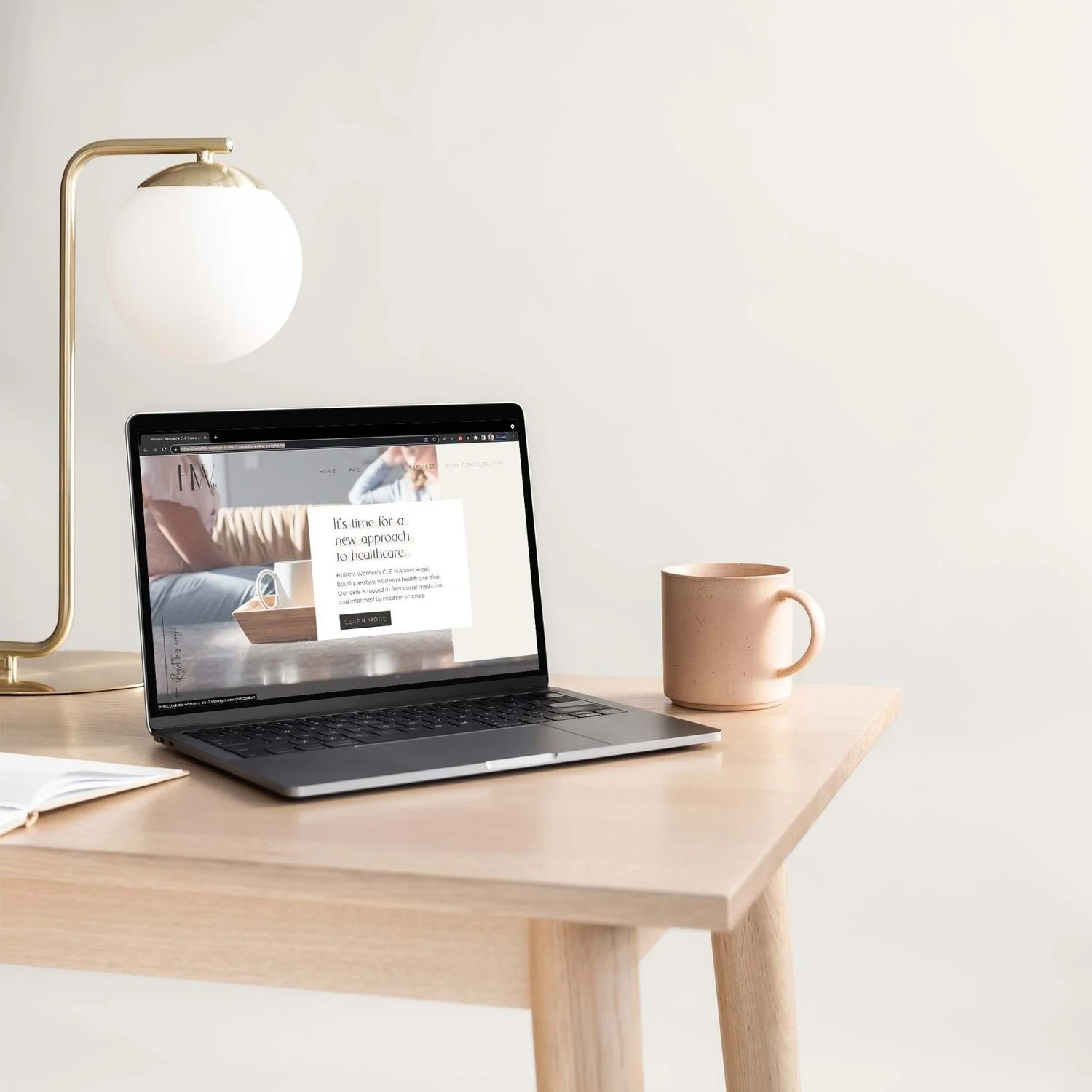The Anatomy of the Perfect Home page Layout for Your Website
As a web designer, I frequently get these burning questions from clients like you:
"What information should I showcase on my website?"
"How can I structure the perfect homepage that captivates my audience?"
"Should I opt for a minimalistic approach or fill it with engaging content?"
"How can I ensure my target market's attention is captured?"
These are important questions!
Crafting a website that effectively communicates your message and engages visitors can feel like an overwhelming task. In fact, a recent study revealed that a staggering 72% of potential customers base their purchasing decisions on a website's homepage alone. If your homepage is cluttered, overwhelming, or fails to captivate, chances are visitors will swiftly move on.
Rather than relying on guesswork, let me offer you invaluable insights into the strategic anatomy of a successful homepage, straight from the perspective of a seasoned web designer. Together, we'll unravel the secrets that empower your website to leave a lasting impression on your audience.
A few notes before we dive in...
Persona-focused copy is the key. Cater to the audience you are trying to attract by identifying their pain points and framing THEM as the hero of their own story, not you.
As you hire a web designer, remember you are responsible for supplying your website copy. You might be able to get input from the designer on your homepage layout, but they won’t be writing your content for you. It’s handy to have an idea of what you want to include before working with a designer. If you can invest in professionally written website copy, your site will be that much better!
Also, The foundation of any strong website is brand identity. In addition to needing professionally designed logos, brand fonts, and a color palette, you also need a clear picture of your brand story.
Anatomy of your homepage
HEADER
Your header should include a professional logo and a simple, clear menu that help your visitors find what they are looking for. Avoid cute labels like 'my journal' (blog) or 'customer love' (reviews). These confuse both your visitors and search engines!
HERO
This section is in what’s called the “above the fold” area, which means in about the first 1000px of your page. This is the area that’s visible before scrolling further down the page. This area is your first chance to spark the interest of your visitor.
Use a professional image that relates to your business. Your headline should explain what you offer and how it benefits your visitors. Use keyword-rich heading copy. Your Call To Action should be the action that you want your visitor to take. Write a compelling line of copy here, rather than just ‘GET IN TOUCH’.
INTRODUCE YOURSELF
Most businesses are made of human relationships, whether you sell services or products. Once you’ve talked about your offering and shared what life could look like for your potential customer with your help, now is the perfect time to introduce yourself.
A good way to think about writing your “about me” copy is to keep your mission and your customers as the main focus. Speak to why you help the people you help, why you created this offer, and what it means to you to help them overcome their struggle. This takes the pressure off of you writing about yourself, but also keeps things interesting and engaging for your potential customers.
What to include? A picture of you at work, a brief but compelling intro copy, and a button leading to your About Page.
OFFERINGS
Once you have the interest of your visitor, you want to make sure they see your most profitable offerings. These are generally the services you offer or the products you sell. Maybe, if you own an online shop, your top product categories. Or, if you run a blog, your most popular series, and columns. Think of this as a visual menu to quickly move them off the homepage. You might lose them if they have to scroll back up to your navigation.
What to include? Visuals accompanying titles and small descriptions for your top offerings. Photography works well here, but even icons or illustrations are good ideas if you have some within your brand package.
RELATABLE SOCIAL PROOF
Reassure your potential clients by sharing testimonials from your previous clients. This helps establish you as an authority and as an established business worthy of their trust.
EXTRAS
Other sections you may want to consider adding:
latest blog posts
Latest portfolio items or case studies to showcase your services
lead magnet sign up form
Newsletter sign up form
workshops or events
partner logos
FOOTER
The footer of a website is just as important as the header, as it is the last chance for you to grab a visitor’s attention and encourage them to take action. Some of the most common components in a website footer include navigation links, social media icons, and contact information.



